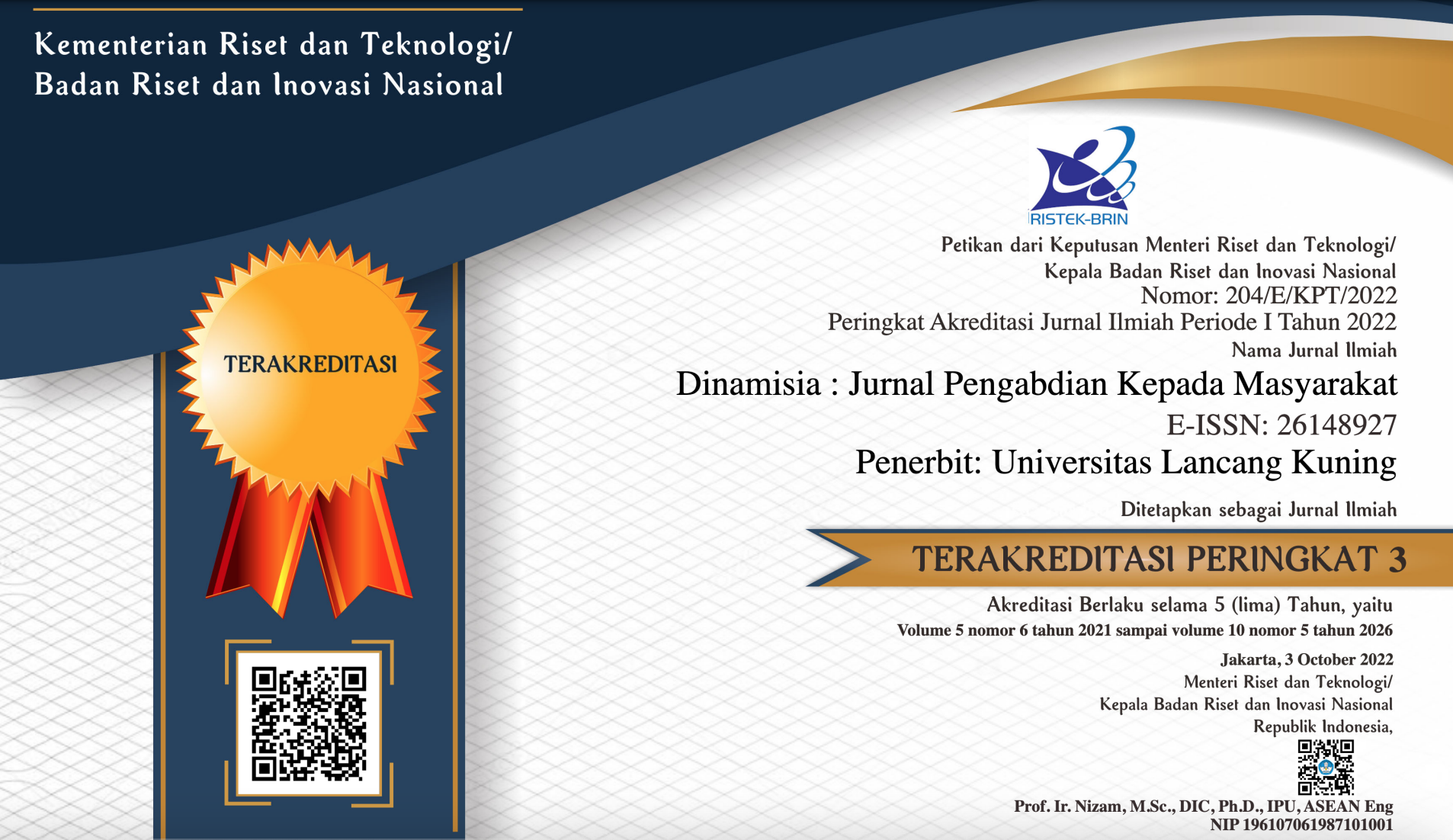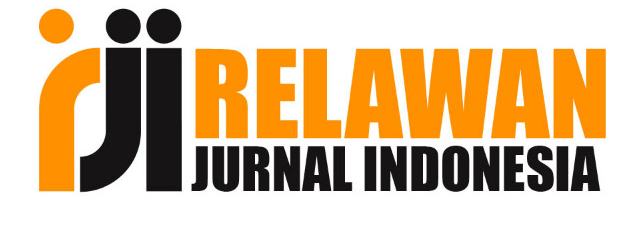Pelatihan Pencegahan Penularan Penyakit Scabies dan Peningkatan Hidup Bersih dan Sehat Bagi Santriwan
Abstract
Scabies is a highly contagious skin disease in humans and other mammals caused by the parasitic mite sarcoptes scabiei. The main transmission of scabies is from direct physical contact, so scabies is susceptible to spread in a closed environment that is densely populated, such as houses, dormitories, and boarding schools. The location of the training is at Sulaimania Boarding School in Kuta Baro District, Aceh Besar Regency. The objective to be achieved from the training activities is to increase the knowledge of students at Sulaimania Islamic Boarding School, through the dissemination of knowledge about clean and healthy living behaviors to prevent scabies. The method used in the form of lectures, practice and frequently asked questions. Evaluation of training activities is carried out by distributing questionnaires before and after the activity. The evaluation showed that overall there was an increase approximately 60.34% in students' understanding of the prevention of scabies and healthy and clean living behaviors and the participants benefited from this training.
Downloads
References
Arifuddin, A., Kurniawan, H., & Fitriani, F. (2016). Faktor Risiko Kejadian Scabies di Rumah Sakit Umum Anutapura Palu. Medika Tadulako, 3(3), 40–59.
Aukerman, W., Curfman, K., Urias, D., & Shayesteh, K. (2019). Norwegian Scabies management after prolonged disease course: A case report. International Journal of Surgery Case Reports, 61, 180–183. https://doi.org/10.1016/j.ijscr.2019.07.025
Baccouche, K., Sellam, J., Guegan, S., Aractingi, S., & Berenbaum, F. (2011). Crusted Norwegian scabies, an opportunistic infection, with tocilizumab in rheumatoid arthritis. Joint Bone Spine, 78(4), 402–404. https://doi.org/10.1016/j.jbspin.2011.02.008
Chandler, D. J., & Fuller, L. C. (2019). A Review of Scabies: An Infestation More than Skin Deep. Dermatology, 235(2), 79–80. https://doi.org/10.1159/000495290
Executive Committee of Guideline for the Diagnosis and Treatment of Scabies. (2017). Executive Committee of Guideline for the Diagnosis and Treatment of Scabies. Guideline for the diagnosis and treatment of scabies in Japan (third edition): Executive Committee of Guideline for the Diagnosis and Treatment of Scabies. J Dermatol, 44(9), 991–1014.
Griana, T. P. (2013). Scabies: Penyebab, Penanganan dan Pencegahannya. El-Hayah, 4(1), 37–46.
Hay, R. J., Steer, A. C., Engelman, D., & Walton, S. (2012). Scabies in the developing world-its prevalence, complications, and management. Clinical Microbiology and Infection, 18(4), 313–323. https://doi.org/10.1111/j.1469-0691.2012.03798.x
Marotta, M., Toni, F., Dallolio, L., Toni, G., & Leoni, E. (2018). Management of a family outbreak of scabies with high risk of spread to other community and hospital facilities. American Journal of Infection Control, 46(7), 808–813.
Melo, E. D., Ribas, C. B. da R., & Encarnação, I. C. L. (2020). Digital dermoscopy: a complementary method in the diagnosis of scabies. Anais Brasileiros de Dermatologia, (xx). https://doi.org/10.1016/j.abd.2019.11.014
Mulyawan, G., Hidayat, D. R., & Badrujaman, A. (2020). Program Bimbingan Karir Untuk Meningkatkan Kemauan Kerja Siswa Kesetaraan Paket C di Kota Serang. Dinamisia, 4(2), 250–254.
Wang, C. H., Lee, S. C., Huang, S. S., Kao, Y. C., See, L. C., & Yang, S. H. (2012). Risk factors for scabies in Taiwan. Journal of Microbiology, Immunology and Infection, 45(4), 276–280. https://doi.org/10.1016/j.jmii.2011.12.003



















